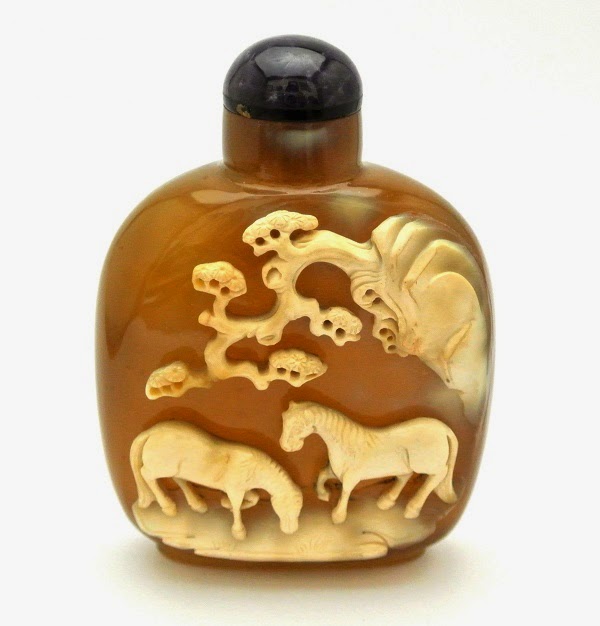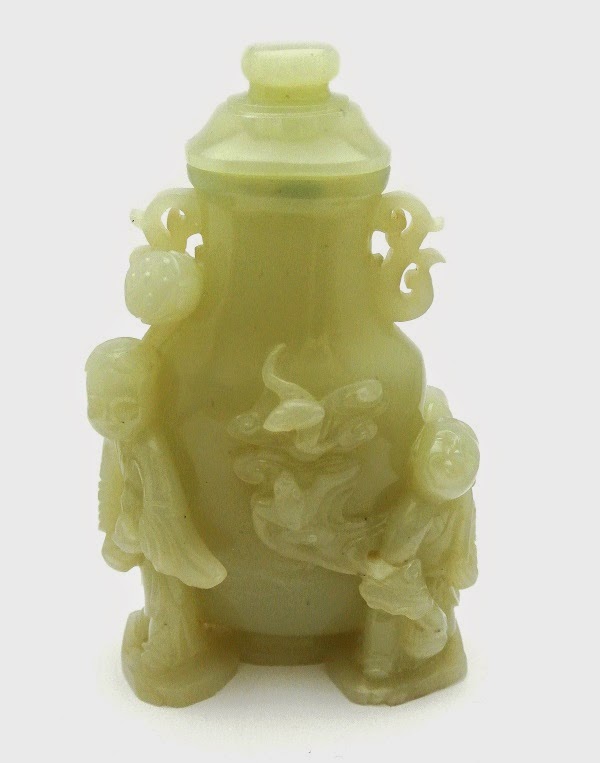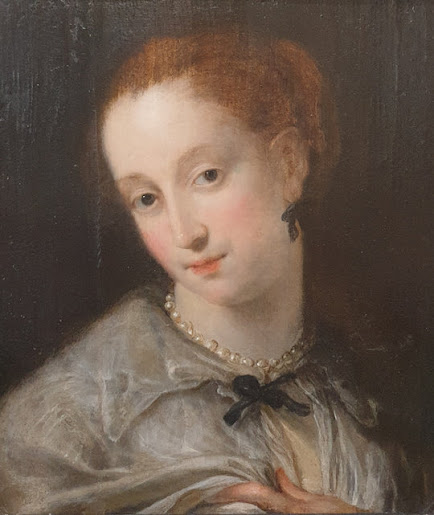Chinese Art at Grays
Chinese art, like Chinese history, is typically classified by the succession of ruling dynasties of Chinese emperors, most of which lasted several hundred years. It is based on or draws on Chinese heritage and culture.
Early forms of art in China were made from pottery and jade in the Neolithic period, to which bronze was added in the Shang Dynasty. In early imperial China, porcelain was introduced and was refined to the point that in English the word 'china' has become synonymous with high-quality porcelain.
Grays houses an extensive collection of Chinese art. Our Asian art dealers such as A Guest & Gray, Wheatley Antiques, David Bowden, Jeremy J.Mason and Anita Gray, stock an incredible selection of items including Chinese jade, pottery, glass and bronze.
With Chinese New Year underway, we focused on the latest offerings of Chinese art from our new showcase dealer Alexandra’s Art Corner.
Snuff Bottle
It’s said that snuff was introduced to China between the end of Ming Dynasty (1368-1644) and the beginning of Qing Dynasty (1644-1911) by Matteo Ricci who was an was an Italian Jesuit priest. His 1602 map of the world in Chinese characters introduced the findings of European exploration to East Asia.
Chinese Jade
Chinese jade is the primary hardstone of Chinese sculpture. It was used to create many utilitarian and ceremonial objects, ranging from indoor decorative items to jade burial suits, reflecting the ancient Chinese belief that jades would confer immortality or prolong life and prevent decay.
Soapstone Carving
After jade, the principal stone carved by the Chinese is soap-stone, a very soft material varying in colour from a light brown or pale green to a distinctive rich and deep red. Soapstone has been carved by the Chinese for centuries.
Huluping; ‘Double-Gourd' Vase
Huluping derives its form from a double gourd, a shape that was made possible by the invention of the Longquan Kiln during the Southern Song dynasty. As a symbol of fertility, the double gourd is considered to be good luck. It is also a Daoist emblem of immortality.
All these items and many more are on display in Alexandra’s Art Corner showcase, FS007.
Early forms of art in China were made from pottery and jade in the Neolithic period, to which bronze was added in the Shang Dynasty. In early imperial China, porcelain was introduced and was refined to the point that in English the word 'china' has become synonymous with high-quality porcelain.
Grays houses an extensive collection of Chinese art. Our Asian art dealers such as A Guest & Gray, Wheatley Antiques, David Bowden, Jeremy J.Mason and Anita Gray, stock an incredible selection of items including Chinese jade, pottery, glass and bronze.
With Chinese New Year underway, we focused on the latest offerings of Chinese art from our new showcase dealer Alexandra’s Art Corner.
 |
| Glass snuff bottle with double horse motif |
Snuff Bottle
It’s said that snuff was introduced to China between the end of Ming Dynasty (1368-1644) and the beginning of Qing Dynasty (1644-1911) by Matteo Ricci who was an was an Italian Jesuit priest. His 1602 map of the world in Chinese characters introduced the findings of European exploration to East Asia.
 |
| Covered jade vase |
Chinese Jade
Chinese jade is the primary hardstone of Chinese sculpture. It was used to create many utilitarian and ceremonial objects, ranging from indoor decorative items to jade burial suits, reflecting the ancient Chinese belief that jades would confer immortality or prolong life and prevent decay.
 |
| Soapstone carving of Buddha |
Soapstone Carving
After jade, the principal stone carved by the Chinese is soap-stone, a very soft material varying in colour from a light brown or pale green to a distinctive rich and deep red. Soapstone has been carved by the Chinese for centuries.
 |
| Double gourd vase |
Huluping; ‘Double-Gourd' Vase
Huluping derives its form from a double gourd, a shape that was made possible by the invention of the Longquan Kiln during the Southern Song dynasty. As a symbol of fertility, the double gourd is considered to be good luck. It is also a Daoist emblem of immortality.
All these items and many more are on display in Alexandra’s Art Corner showcase, FS007.
.jpg)

Comments
Post a Comment